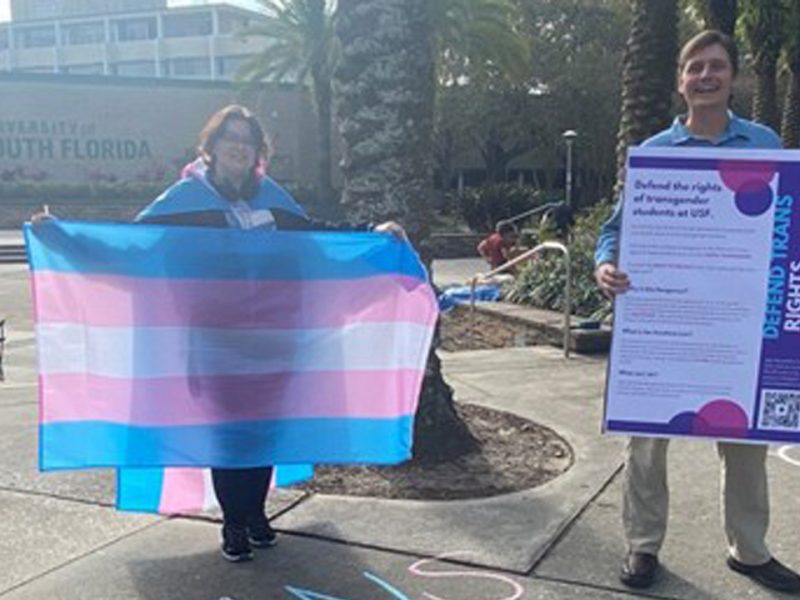
Immigration spike has created an unexpected wave of enrollment at Miami-Dade schools
Miami Herald | By Sommer Brugal | January 17, 2023
Since the start of the 2022-23 school year, nearly 10,000 students from Cuba, Haiti, Nicaragua and Venezuela have enrolled in Miami-Dade County public schools — about 2,500 more students than who arrived in the entire 2021-22 year, reflecting the surge of immigrants coming from those four countries over nearly six months.
All told, the district has enrolled more than 14,700 new students who’ve emigrated from another country, an unexpected wave that comes at a time when the district is grappling with an already thin workforce and classroom teacher vacancies — one of the pandemic’s lingering effects.
“This whole thing is like a perfect storm. We’ve already been experiencing, for the last couple of years, the lack of human capital,” said Miami-Dade School Board Chair Mari Tere Rojas in a meeting Wednesday where board members and Superintendent Jose Dotres discussed the issue. “Now, we’re going to have more children to serve.”
Of the 14,723 students who enrolled in the district between Aug. 17, 2022 — the start of the school year — and Jan. 10, 2023, 9,935 came from Cuba, Haiti, Nicaragua and Venezuela, the four countries where U.S. immigration levels have been at record highs over the past year, according to the district. The remaining students, enrolled in all grade levels, have come from more than 20 countries, mostly countries in the Americas such as Argentina, Colombia, Honduras, Mexico and Peru, and some from Russia and Ukraine.
The increase has become a topic of discussion for School Board members in recent months. Rojas in October requested data regarding migrant students. On Wednesday, at the end the board’s first workshop of the calendar year, the numbers came into sharper focus.
Board members and district staff briefly discussed the implications of the influx of students, particularly with the district facing fewer teachers since the pandemic. (At the start of the school year, the district reported about 220 classroom vacancies.)
The arrival of the new students has been particularly acute over the last few months, reflecting the near-daily landings of migrants off Florida’s southeast coast.
From mid-October to Dec. 22, the number of student migrants who enrolled in the district increased by more than 3,100, records show. On Oct. 11, the district reported 9,864 students who had enrolled after immigrating; by Dec. 22, the number totaled 12,978 students.
In December, just before Christmas, 175 Cubans arrived in the Florida Keys and Hollywood Beach in 24 hours. Over the New Year’s weekend, more than 500 Cubans arrived in the Keys. A group of 70 Haitian migrants arrived Thursday afternoon off Virginia Key, a barrier island off Miami that leads to Key Biscayne.
During the entire 2021-22 school year, the district enrolled 13,404 students who recently came from other countries, records show.
Notably, the countries the district is paying most attention to are Cuba, Haiti, Nicaragua and Venezuela, when comparing this year’s numbers to last year, said Dotres, who updated board members Wednesday on the latest numbers.
So far this year, there have been 4,600 more Cuban immigrant students who have enrolled compared to all of last school year, and nearly 1,700 more students from Venezuela, records show. Overall, the number of students this year enrolling from Nicaragua is just about 330 shy of the total number of students who emigrated last year from the country. And from Haiti, the number is just 90 fewer students compared to last year, data show.
The number of students emigrating from other countries has remained relatively stable compared to previous years, he said, prompting district staff to play closer attention to the four outliers.
In response, the district has launched its Student Influx Guide, or plan for how the district responds to a sudden increase in enrollment. It comprises three brackets and is deployed depending on the severity of the influx.
Currently, the district is operating in the first bracket, or the “engaging stage,” Chief Operating Officer Luis Diaz told the Herald Thursday. That means, once the district is made aware of an influx, staff begins monitoring and targeting which schools students are enrolling in.
For the time being, no school has become too overcrowded or is unable to provide the resources needed, Diaz said. Though exact data was not available for which schools have received the majority of students since the start of the school year, Diaz said, historically, a family’s country of origin has indicated where they have settled across the region. (Cubans, for example, often choose to reside in Hialeah, he said.)
The district registers the new students immediately and, as part of the engaging stage, follows up with those students to ensure proper documentation, or language exams, for example, are finalized. Then, and perhaps most importantly, services for those students are “triggered.”
“At this point in time, [we’re] making sure that every student that resides in and enrolls in the district gets the services they’re allowed to receive and the services they should receive,” Diaz said.
The next phase, Diaz said, would be to set up registration centers or hubs around the district to streamline student enrollment processes, avoid overcrowding at one or various schools in a particular neighborhood and centralize the resources both the schools and families often require upon arrival.
BROWARD SCHOOLS SEE FEWER MIGRANT STUDENTS
Compared to Miami-Dade, Broward County schools usually receive fewer immigrant students, defined as those born in another country who have been in the U.S. for less than three years, said Victoria Saldala, director of the Bilingual or English for Speakers of Other Languages Department at Broward Schools.
The district reported nearly 6,900 foreign-born students who registered for the first time at a U.S. school less than three years ago, although its August number includes those who enrolled during June and July.
Since June 2022, the highest enrollment numbers have come from Colombians, followed by Cubans, Haitians and Venezuelans.
The district operates an International Welcome Center, which supports parents and guardians as they register their children for school, and connects them with school social workers to help them with school supplies, uniforms, clothing and food. All schools also provide mental health and other services as well.
“We don’t care how they got here. Our job is not to question that. We accept all students,” said Saldala, who’s been working with these families for about 35 years, the first 18 or so in Miami-Dade and 17 years in Broward.
PREVIOUS INFLUX OF MIGRANT STUDENTS
This isn’t the first time Miami-Dade schools have dealt with an influx of students as the result of immigration, which Rojas noted Wednesday.
In the 1980s, there was the Mariel boatlift, which allowed Cubans who wished to leave Cuba to board boats at the port of Mariel in Havana and flee to the US. In just six months, more than 125,000 Cubans arrived to the United States, predominantly settling in South Florida.
In the 1990s, there was the rafter crisis, which saw 35,000 Cubans flee the country.
This year, Diaz said, the challenges are mostly related to hiring teachers and other staffers.
“In some cases, it will take a minute or so to hire a teacher,” he said. If and when a school receives an influx of students and a new position is required to offset the numbers, the district will allocate and budget for the position “as soon as possible. The issue will be the hiring of the staffer for the position.”
Miami Herald reporter Jimena Tavel contributed to this story.





